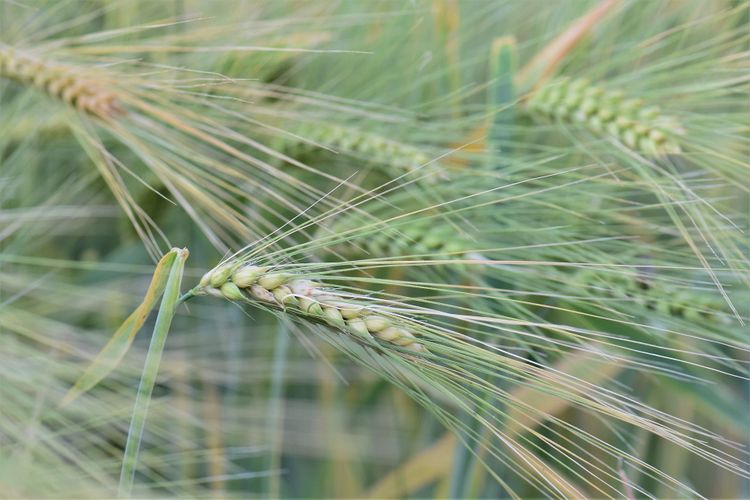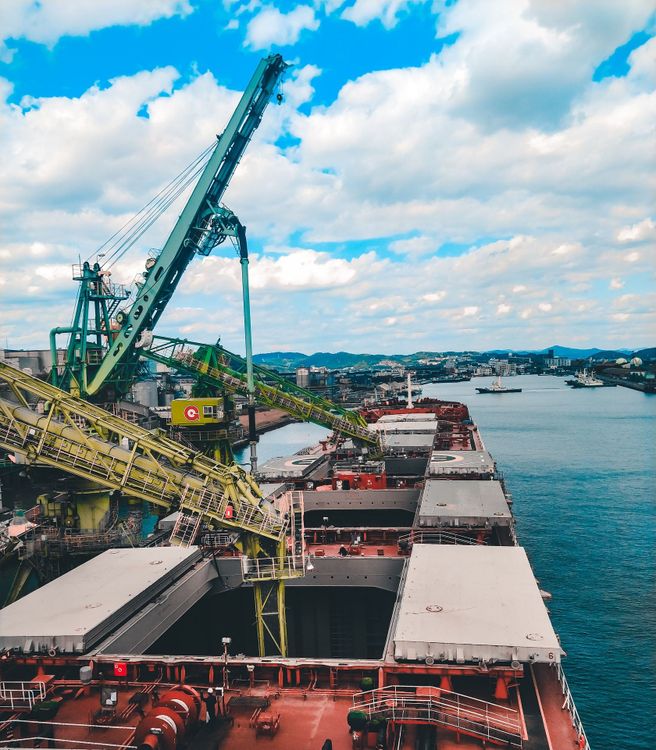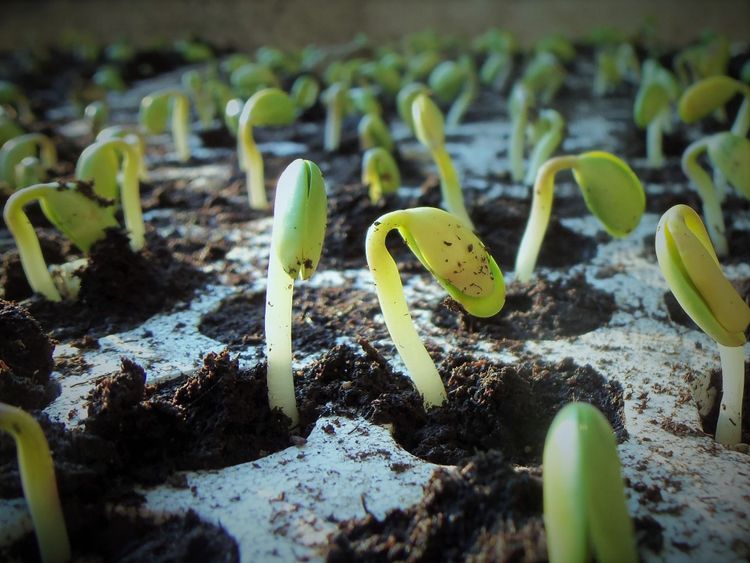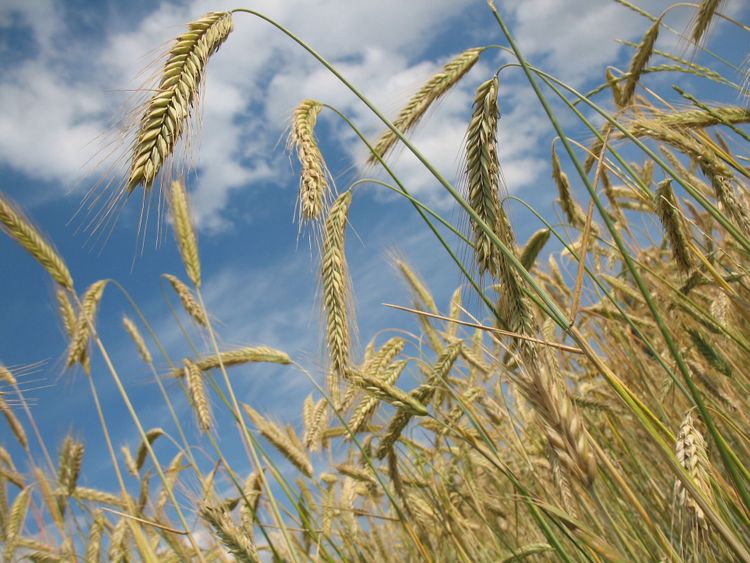Black Sea Agricultural Trade Gaining Ground
Background
The Black Sea, situated between Southeast Europe and Asia, is surrounded by six countries—Romania, Bulgaria, Ukraine, Russia, Georgia, and Turkey. The region produces a variety of agricultural goods, serving both domestic demands and international markets. The low-lying, non-mountainous areas have fertile soils appropriate for the production of a number of commodities. The region’s main crops include wheat, corn, sugar beets, sunflower seeds, and potatoes. In addition to the principal crops named above, some countries also produce tobacco, beef, dairy, fruits, and vegetables. The proximity of this production to a strategic body of water that connects countries and continents has major and growing implications for global trade.

Russian and Ukrainian Agriculture
Russia and Ukraine lead the Black Sea region in production of grains. Ukraine currently has around 41 million hectares in production, covering a whopping 70 percent of all land in the country. Agriculture leads Ukraine’s export market, generating approximately 12 percent of their gross domestic product (GDP). The country is a top-ten exporter of barley, corn, and wheat, and total grain production reached 66 million tonnes in 2016. This figure is expected to increase to over 70 million tonnes by 2020, aided by better political stability and a growing economy. As Ukraine continues to boost production, trade through the Black Sea will receive greater emphasis.
Russia’s agricultural sector has boasted great success in recent years. With over 217 million hectares of agricultural land and total grain production reaching 119 million tonnes last year, the country has made huge strides considering it was a net importer of grains only 15 years ago. Russia is now the world’s top wheat exporter, surpassing the United States (US) last year with export volume reaching 40.5 million tonnes. This figure was just 27.8 million tonnes in 2016.

This increase may be an unintended consequence of US and EU sanctions levied against Russia in 2014 in response to the Russian military presence in Ukraine. The sanctions lessened Russia’s access to imports and helped boost domestic production. The USDA now cites the country as having a 22 percent share of total world wheat exports, a value that was just 11 percent prior to the sanctions in 2014. More favorable weather has also contributed to Russia’s increased wheat production. Warmer conditions have boosted yields, providing farmers with higher returns. These greater profits have allowed farmers to invest in better seed and farming equipment, which are conducive to increased production.
Furthermore, a drop in global oil prices a few years ago led to an economic crisis in Russia and a depreciated ruble. This attracted more foreign buyers looking to import wheat at a cheaper price than what was offered by the US. The Russian Minister of Agriculture sees an opportunity to keep increasing these exports, calling for expanded capacity and infrastructure of Black Sea ports. The future of Russia’s agricultural sector, particularly in wheat production, looks bright.


Black Sea Trade
The world has relied on Black Sea trade for millenia. Trade continues to grow in the present day as countries like Ukraine and Russia rapidly increase production of commodities like wheat. The effects of the unexpected recent surge in Black Sea production of grains on food security could be huge. According to research by the FAO, many countries in the Middle East and North Africa currently import more than 50 percent of their wheat demand. Additionally, out of the 795 million people considered undernourished globally, 92 percent reside in Asia and Africa. In order for individuals to become more food-secure, they must have stable access to food. Agricultural trade through the Black Sea could help address the food insecurity that many face.

Trade from the Black Sea region to northern Africa and elsewhere would not be possible without the Bosphorus Strait. This natural waterway is critical for transporting goods from the Black Sea into the Sea of Marmara, the Aegean Sea, and into the Mediterranean. The Bosphorus Strait is 19 miles long, and has a maximum width of 2.3 miles at its northern entrance and a minimum width of just over 2,400 feet in other areas. Approximately 48,000 ships travel through the Strait each year, or four times the amount flowing through the Panama Canal. However, political unrest at any point could theoretically result in the Strait closing to trade, despite Turkish treaty obligations to the contrary. In fact, some nonstate actors probably possess the ability to close the Strait temporarily, which would send shockwaves through world trade in all sectors, not just agriculture.
Shipments of commodities through the Black Sea are growing thanks to lower freight rates and oil prices, as well as the depreciation of the Russian ruble and Ukrainian hryvnia. For crops like wheat, this has resulted in some countries—mainly in northern Africa—sourcing the crop from Black Sea region exporters at a cheaper price instead of importing wheat from the US or Australia. However, there are some factors which could present challenges to trade through the Black Sea. Political tensions, poor port infrastructure and capacity, and climate change are a few of the variables that could hinder trade. Although things seem to be moving smoothly at this time, traders and grain markets should keep a close eye on any turmoil in the region.
Conclusion
As Russia and Ukraine continue to increase wheat production, trade through the Black Sea will undoubtedly expand further. If the region works to build port capacity and infrastructure, it could help provide cheaper imports to places like northern Africa which heavily rely on such shipments. Accidents or intentional acts could suddenly interrupt trade through the Bosphorus choke point. Climate change could turn out to harm crop productivity, although so far it seems beneficial in colder areas. In order to build a margin of safety, Black Sea region countries should maintain their focus on increasing production. In the process, they will help grow their economies and improve the lives and nutrition of individuals in importer countries.
 Insight
InsightLow US Hard Red Winter Wheat Production Likely, Despite Acreage Boost
 Insight
InsightChina’s Grain Imports Reach Record With a Growing Reliance on Brazil
 Insight
InsightUS Soybean Acreage to Shrink to a Four-Year Low, Gro Predicts
 Insight
Insight

 Search
Search